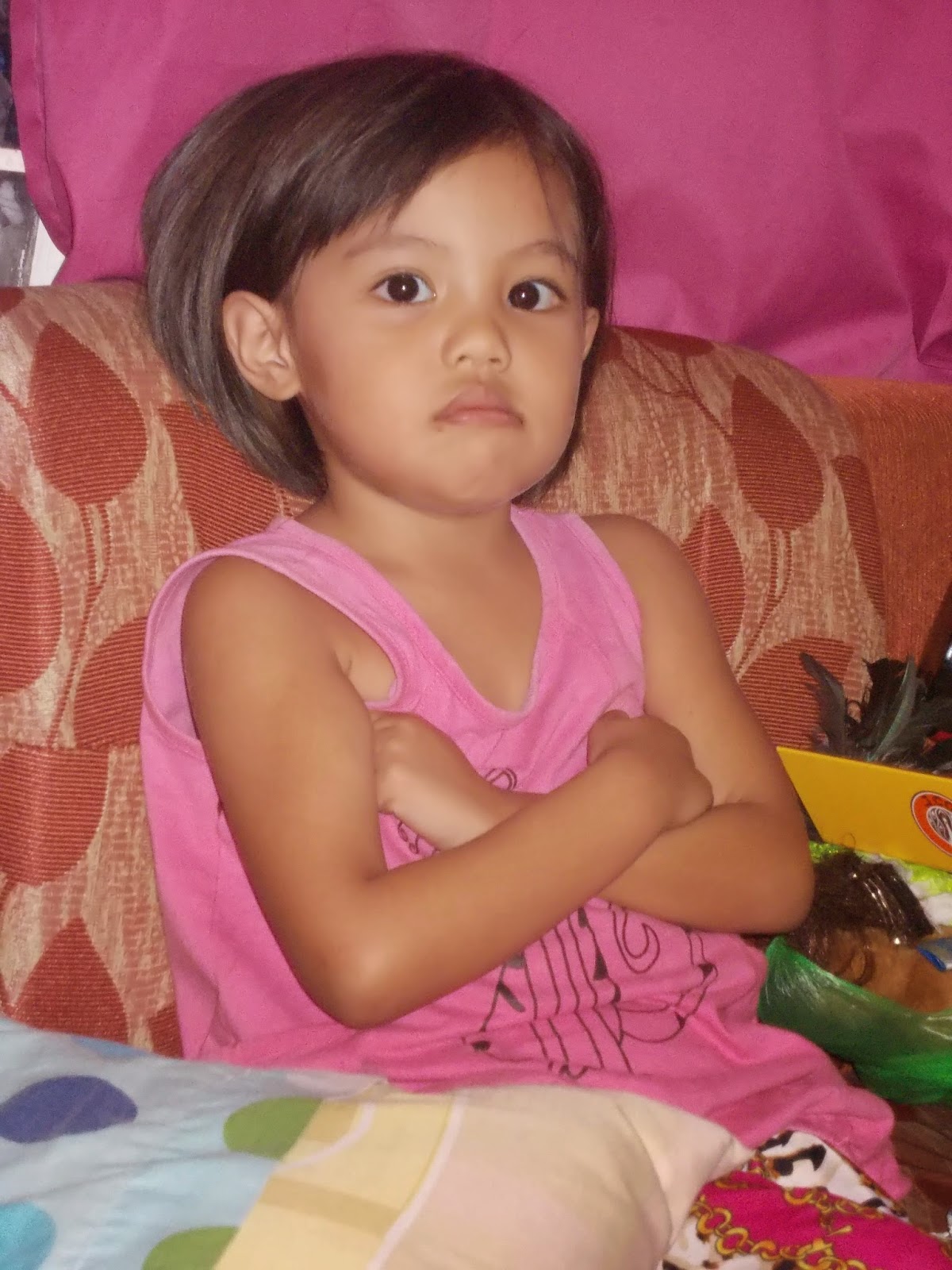Before Chimkas was born I had mixed feelings...excitement... joy... fear..
Excitement and joy are common to expecting mothers.. But fear? Well, I guess it might be common too.. Besides, everyone fears for the unknown.
My fear, however, is coupled with paranoia as my pregnancy was a difficult one. I had complications- anemia, UTI plus the dreaded OLIGOHYDRAMNIOS. I had to be operated earlier than expected because my amniotic fluid continued to dwindle even with all the complete bed-rest and hydration (oral w/ 4-5 liters a day plus dextrose) that my doctor had advised.
At the operating room, I was relaxed. Thanks to my anesthesiologist who kept me entertained for the whole duration of the operation. It came too easy and quick.. The next moment I know, I had Chim on my chest lapping at my breast. I thought, "Boy, she's too small." I heard my OB talked to Chim's pedia in a hushed voice. I couldn't hear them clearly but I knew they were talking about my baby.. Then, I was put to sleep.
After I had recovered and was back at my room, my husband talked to me in a nervous voice. He asked if the pedia explained Chim's condition. "What condition?" I asked. Then he said with teary eyes, "Chim's head is a little bit longer than the normal baby's head. And her left foot is a little bit clubbed."
At that moment, I felt like I was in a vacuum. I hated the pedia. "My baby is fine," I kept muttering to myself.
In the morning, the nurse brought in Chim. I immediately checked her head and indeed, it was longer than usual. Her left foot is slightly turned in at the ankle. I panicked!! This can't be.
The pedia tried all her medical knowledge to explain about CLUBBED FOOT and DOLICOCEPHALY. Yet, all I could hear from her were BLAH-BLAH-BLAHS. She further added the OLIGOHYDRAMNIOS might have been the culprit.
THIS IS WHAT I HAVE LEARNED FROM WIKIPEDIA.
A
club foot or
clubfoot, also called
congenital talipes equinovarus (
CTEV), is a
congenital deformity involving one foot or both. The affected foot appears to have been rotated internally at the ankle. Without treatment, people with club feet often appear to walk on their
ankles or on the sides of their feet. However with treatment, the vast majority of patients recover completely during early childhood and are able to walk and participate in athletics as well as patients born without CTEV.
It is a relatively common
birth defect, occurring in about one in every 1,000 live births. Approximately half of people with clubfoot have it affect both feet, which is called
bilateral club foot. In most cases it is an isolated
dysmelia (disorder of the limbs). It occurs in males twice as frequently as in females.
A week after we were out of the hospital, we consulted the recommended neuro- specialist and orthopedist. A kidney ultrasound was also recommended and we readily complied just to assure ourselves Chim's fine.
The neuro- surgeon's prognosis was promising. The ortho- specialist advised a daily massage on the foot.
After a month, Chim showed improvements. Her head circumference has increased. The dolico is no longer prominent as her head is taking shape. Her left foot has also straightened. Thank God.
With all the medical MUMBO JUMBOS, I say " My baby's fine." Thank God. Chim's okay.


 2. Watch your diet. The food you eat may play a role why your
baby is over sweating, especially when you are breastfeeding. Avoid salty foods.
Eat leafy vegetables. Hydrate yourself. For your baby's diet, make sure that
his/ her food is not rich in sodium.
2. Watch your diet. The food you eat may play a role why your
baby is over sweating, especially when you are breastfeeding. Avoid salty foods.
Eat leafy vegetables. Hydrate yourself. For your baby's diet, make sure that
his/ her food is not rich in sodium.

